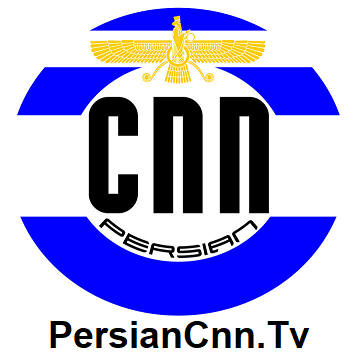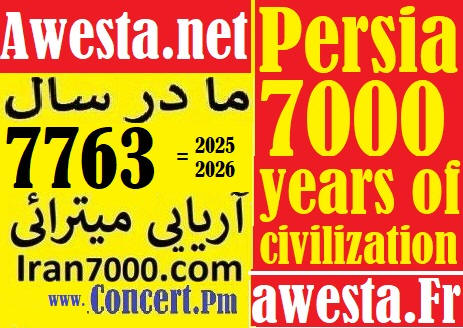

History of the Creation and Foundation of the Modern Zoroastrian Movement, or
Neo-Zoroastrians, by Siyâvash Awesta
During the 1979 Revolution, David Abbassi — known as Siyâvash Awesta —
was just 21 years old.
From the very first day, due to his close ties with the new rulers and leaders,
he realized that Iran and the world, under the domination of clerics and
ayatollahs, were heading toward a dark and bloody future.
That same year, 1979, he founded the newspaper Ershad (meaning
self-awareness), under two slogans:

He turned Ershad into a free, enlightened, and secular platform in Iran.
As the youngest founder and editor-in-chief in the world to direct a newspaper
criticizing political religion and the politicization of faith, he quickly faced
censorship, repression, and the banning of his paper.
After its prohibition, he managed to continue publishing Ershad for less
than a year. In response, the Islamic Republic attempted to undermine his
influence by renaming the Shah’s former Ministry of Information and Tourism as
the Ministry of Ershad, in a propaganda effort to usurp the name and
weaken Siyâvash Awesta.
He then published Islam Without the Clergy, a work critical of religious
government and political Islam, personally handing a copy to Khomeini in 1980.
On the very same day, Khomeini mounted the pulpit and launched a fierce attack
on the book, declaring:
“If you take the clergy (the ayatollahs) away from Islam, you destroy Islam.”
His third book, published that same first year of the Islamic Revolution, was
Ijtihad: Innovation in Thought and Jurisprudence (The Organization of the
Ayatollahs is Stagnation in Thought).
In it, he explained that genuine thought is movement, innovation, renewal, and
the creation of doctrines suited to different eras. By contrast, clerical
jurisprudence (fiqh and feghahat) and the organization of the
ayatollahs meant halting reflection, imitation, and submission to jurists still
trapped in a 1,400-year-old mindset, hostile to intellectual renewal.
He noted that, from then until today, the leaders of political Islam
worldwide have repeated the same logic: hostility to Western civilization and a
desire to drag humanity back to the early days of Mohammed’s Islam — 1,400 years
ago.

As early as 1980, Siyâvash Awesta declared that the only path to salvation for
Iran was a return to its rational, innovative, peaceful, and humanist
civilization of the Avesta — the cradle of great thinkers such as Mithra,
Zoroaster, and Cyrus, as well as the Elamite, Median, Parthian, Achaemenid, and
Sassanian civilizations. He also recognized Moses, Jesus, Mani, and Buddha as
spiritual lights for the world.
To elaborate this vision, Siyâvash Awesta published numerous works in Persian,
French, and English, including:
In these, he presented a secular and rational philosophy, which he
described not as a religion but as a teaching (âyin), reminding readers
that neither Mithra nor Zoroaster ever claimed to have been sent by God.
On this humanist and rational foundation, the Neo-Zoroastrian movement
was born. Each year, Siyâvash Awesta (David Abbassi) publishes the Aryan
Mithraic Millennium Calendar; today, we are in the year 7763, the
equivalent of 2025.
Siyâvash Awesta stresses that clerical religiosity (fiqh & feghahat)
is the enemy of renewal and innovation. It promotes stagnation, ignorance, and
blind conformity, obstructing humanity’s intellectual growth.
From 1980 onward, he emphasized that his goal was not to raise masses of blind,
submissive followers but, within the philosophy of the Neo-Zoroastrians, to
create modern Zoroasters:
free and pure human beings, choosing truth and righteousness, fleeing lies,
ignorance, hatred, and corruption, fighting their own inner demon (ahriman),
and joining Ahura Mazda, the God of “knowledge and power.”
Their ultimate aim: to choose goodness in thought, word, and deed; to become
enlightened creators themselves; to build paradise on Earth; and to abolish
hell, war, jealousy, and racism.
In 1985, he founded the Avesta Institute on the Champs-Élysées in Paris,
launched Radio Âvâye Irân (The Voice of Iran) and later the Mehr World
Television, and, through modern computer and satellite technology, his
publications, and collaborations with international journals, succeeded in
educating millions of people across several generations.
Today, it is rare to find an Iranian who proudly calls themselves Muslim or
bears an Arabic name. This Iranian return to self, through the
Neo-Zoroastrian path, is most visibly expressed in the widespread adoption of
the Faravahar symbol — worn as jewelry, brooches, or tattoos — the same
emblem Siyâvash Awesta places on his official headgear.
Among his many innovations are:
Today, Iranians of the post-1979 generation hold key political and economic
positions around the globe. One hundred of them appear in the proposed
provisional government list drafted by Siyâvash Awesta to establish a
secular, rational, and non-religious authority.
Journal ETOILE Founder Director David Abbasi "Siyavash Awesta" since 1986 - Institut Awesta 66 av des CHAMPS ELYSEES 75008 Paris France - Awesta.fr institut@awesta.net Tel: 09 73 18 18 18